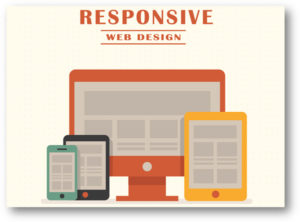Of all the tasks we face in building a website, one of the trickiest is the choice of theme. Over the years we have tried a variety of methods of assisting clients in deciding which one would work for them best.
We’ve tried quite a few approaches all the way from “just giving them one” to a fully open “go out and find one you like“.
Possibly not surprisingly, the most successfully designed and run websites have resulted from the “just giving them one” approach. With our years of design and execution experience, we mostly do know what will work in certain situation.
When given the choice of “go out and find one you like” most clients feel completely overwhelmed when it comes to selecting a theme for their WordPress site. There are literally hundreds of thousands of free and paid premium options. As they keep looking, each theme looks better than the last one
For those who are in a search for the perfect Theme for their site, we will try to share the Top 5 things you should consider, so you can make a balanced decision on the best WordPress theme for your site.

First: Free WordPress Theme vs Premium WordPress Theme
Before we delve into our top 5 let’s just quickly cover this all important question, “why buy when there are so many free ones out there?”.
The main reason why many of us choose a premium WordPress theme over a free one is because you get guaranteed support. Free WordPress themes are often built as a hobby, so you are never guaranteed to get ANY support or updates.
When you pay for a WordPress theme, you get good documentation, access to support, and regular updates. Or at least you should! Some theme developers even offer video tutorials, demo content, and some a free website setup service.
Aside from that, premium themes are make your website more unique because free themes are being used by everyone.
Having said that, here’s what you need to look for when selecting a premium WordPress theme.
Click here to download The Genesis Guide for Absolute Beginners (PDF – 1.4 MB)
#1 Aim for Simplicity (the KISS Principle)
Simplicity is simply the best rule in any design, Many WordPress themes come with lots of colors, complex layouts, flashy animations, etc. Sometimes you may need those things, but in most cases you don’t really need all that.
Look for a theme that has a design layout that helps you support your goal. It needs to look good but without compromising on usability and simplicity.
Make sure that the theme’s presentation style is not overly complicated. The purpose of web design is to help users find information they need and to help site owners achieve their goals at the same time.
If a theme looks great but does not help you get new business or subscribers, then it is not a good theme. It is also not a good theme when your users can’t really find their way around your website.
#2 Responsive Design is Not Optional Anymore
Responsive themes adjust their layout across different screen sizes and devices. A significant number of web traffic is generated from mobile and other handheld devices. Depending on your website’s topics, this number could go even higher than 50% of your traffic.
Google shows mobile friendly websites on top in their mobile search results. Regardless of your site’s topics and demographics, all websites need to be responsive and fully mobile ready.
Most WordPress themes are already responsive by default. But there are still sellers who are selling fixed width layouts that are not mobile friendly at all. Make sure that the theme you are choosing for your website is mobile friendly.
Testing a Theme for Mobile Readiness
The easiest way to test whether a theme is responsive or not is by resizing your browser screen. As you resize your browser screen, you will notice that the theme’s layout will adjust itself to the screen width.
For more thorough testing you can copy the URL of theme’s demo page and paste it in Google’s Mobile Friendly Test page.
Testing a responsive theme against Google Mobile Friendly Test
Please note that this test will show some warnings, regardless of how good a theme is. Lookout for any red flags like text too small, content wider than screen, etc.
#3 Supported plugins
The real power of WordPress comes with WordPress plugins. These plugins make it possible for you to do anything with your WordPress site.
While there are plenty of WordPress plugins, some are must-have WordPress plugins for every websites. Like Gravity Forms, Yoast SEO, W3 Total Cache, etc.
Make sure that your WordPress theme supports all popular plugins. If you are unsure, ask theme developer about it.
#4 Support Options for When You Need Help
One downside of using a free WordPress theme is that there is no guaranteed support. While some developers provide excellent support for their free themes, many free themes have no support option.
If you mess up your WordPress theme, then you will have to figure it out on your own. You can also end up paying a third-party developer to solve the tiniest problems.
Make sure that you select a WordPress theme that has good documentation and support option. Most premium WordPress themes offer detailed documentation with 1 year of email based support.

#5 SEO Friendliness
Your WordPress theme plays a crucial role in your site’s SEO friendliness. A good looking theme can still generate poorly coded HTML, this could affect your site’s performance on search engines.
It could be difficult for beginners to analyze a theme’s source code on their own. This is why many premium WordPress theme developers will let you know that their pages are optimized for SEO.
You can also take a look to see if the page generates proper HTML5 by checking it with W3C Markup Validation service. However, please note that the W3C tool will generate many warnings which are nothing to be worried about.
#6 Page Builders
Page builders are WordPress plugins that allow you to create page layouts using drag and drop user interface. Many premium WordPress themes come with page builders pre-installed. Some of these page builders are used by that theme developer only.
Using such a page builder to create landing pages can produce a lot of unwanted code. If you ever switch the theme, then those pages will require a lot of cleaning up.
You should choose themes that are shipping with one of the most used page builder plugins. You can also purchase these page-builders separately to use with other themes as well.
So what about this Gutenberg thing?
These page builders are going to be hitting a bit of a hiccup we think in the next BIG iteration of WordPress, 5.0. This is where we are getting then Gutenberg editor dropped on us (whether we want it or not!).
Gutenberg has three planned stages. The first, aimed for inclusion in WordPress 5.0, focuses on the post editing experience and the implementation of blocks. This initial phase focuses on a content-first approach. The use of blocks, as detailed above, allows you to focus on how your content will look without the distraction of other configuration options. This ultimately will help all users present their content in a way that is engaging, direct, and visual.




